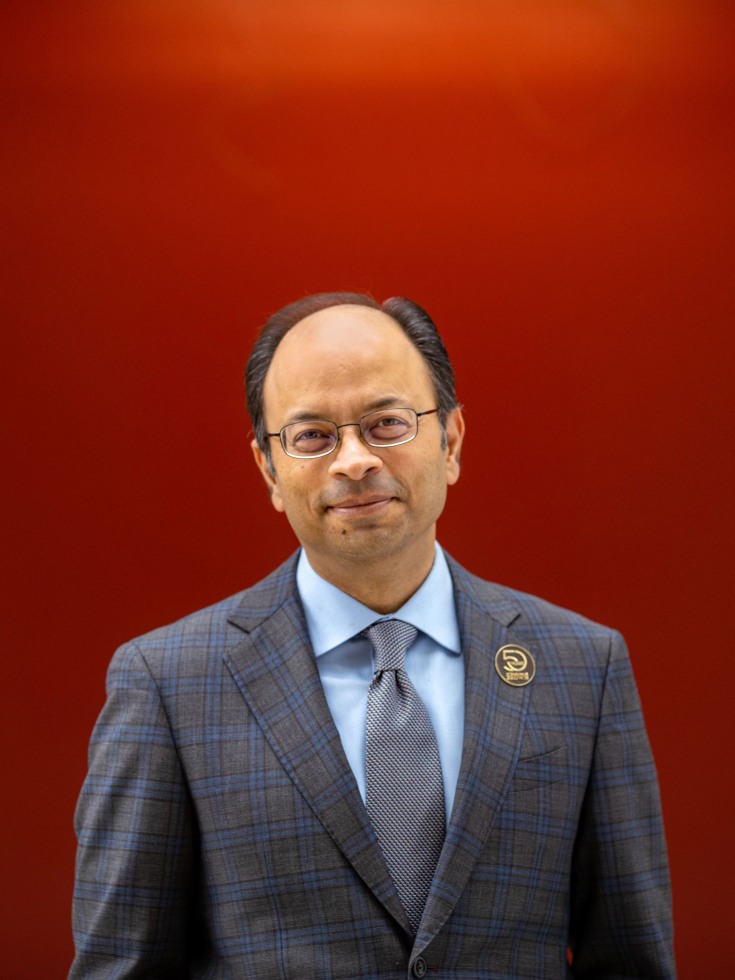PROVIDENCE, R.I. [Brown University] — As dean of Brown’s Warren Alpert Medical School, Dr. Mukesh K. Jain wears many hats. And many coats, too — from sport coats as he explores new collaborations with Rhode Island’s health systems to white lab coats as he conducts research in his lab at Sidney E. Frank Hall on genetic factors that regulate the immune and metabolic systems.
An accomplished physician-scientist, Jain is a champion for biomedical research and an academic leader who spent much of his career aligning clinical, academic and research missions between a major teaching hospital and medical school in Cleveland. Since arriving in Providence in March 2022, he’s been dressing that part at Brown in a number of new and intersecting roles.
Jain is the leader of Brown’s Division of Biology and Medicine, which encompasses the medical school, four biological science departments, 14 clinical departments, two hybrid departments and a dozen centers and institutes. He also holds the additional role of senior vice president for health affairs, overseeing initiatives that involve Brown faculty and hospital partners; leading arrangements regarding clinical, research and teaching activities; and providing strategic vision for the life sciences at Brown and in collaboration with hospital partners to advance Rhode Island as a center for biotech research and innovation.
As a physician, researcher, educator and academic leader, Jain is able to take a big-picture view of how medical education, basic research, health care and biomedical innovation fit together to benefit the community.
“Simply put, we want Rhode Island to be a place where cutting-edge research is happening in a way that informs the delivery of the most advanced therapies to patients, attracts outstanding researchers and students, garners interest from biotech and biopharma partners and advances the health and economic vibrancy of the local community in a kind of positive feed-forward loop,” Jain said. “That’s already starting to happen, and we are going to build upon it even further.”
On the anniversary of his start at Brown, Jain shared takeaways from his first year and his plans for the future.
